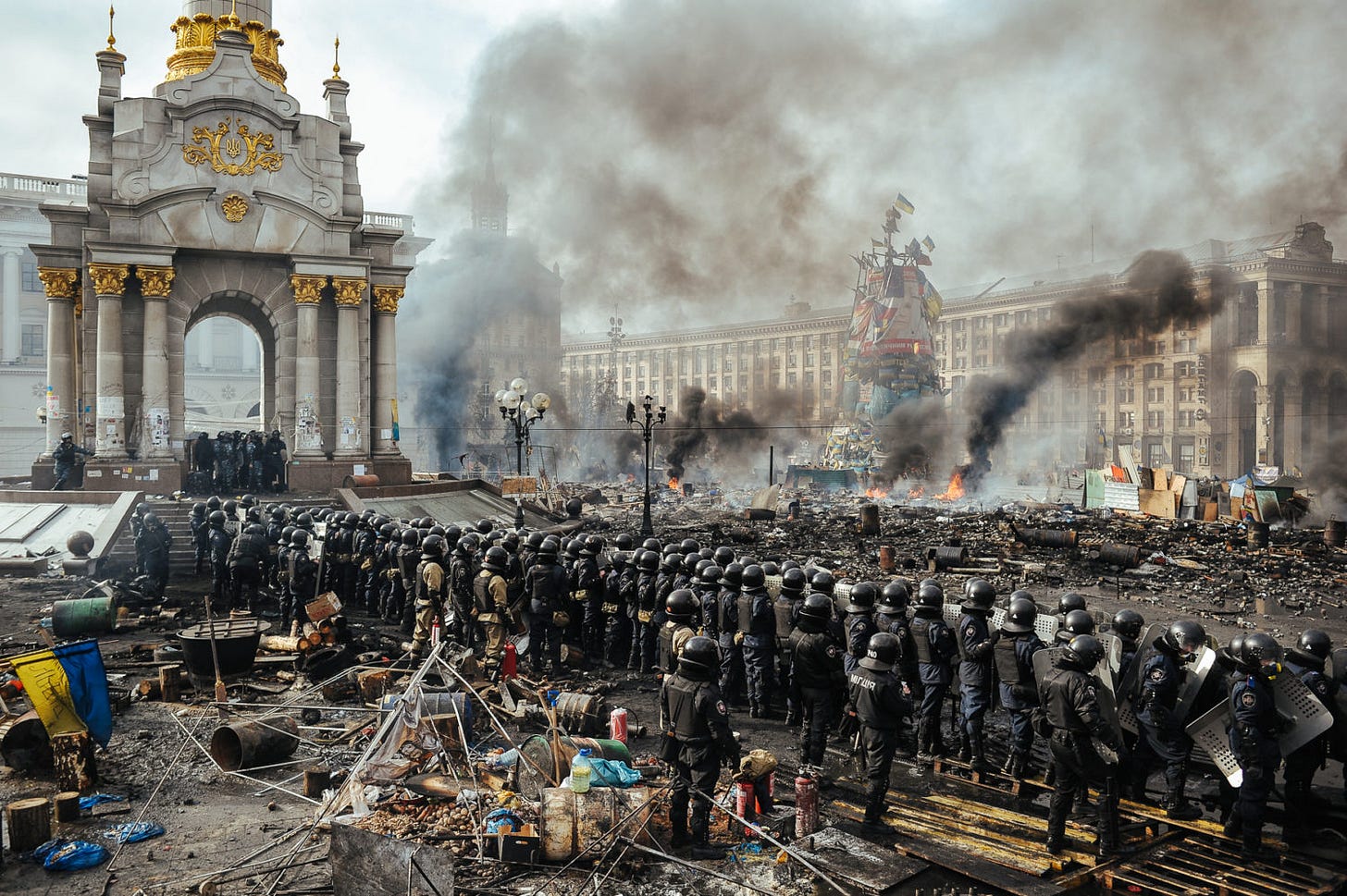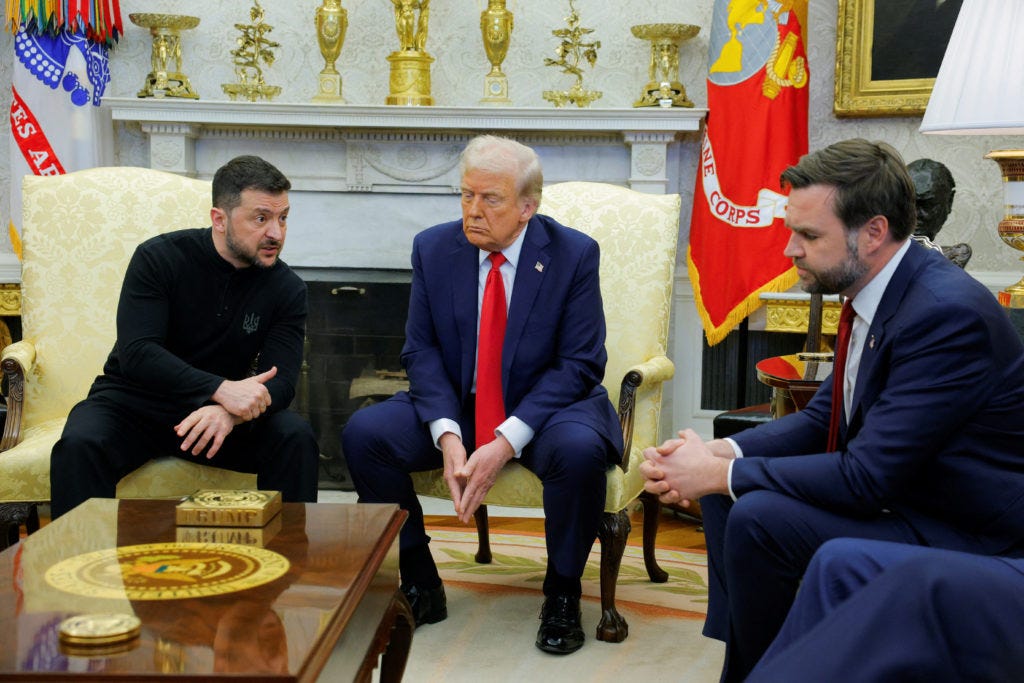Now, my reflections on Ukraine do not arise merely from the trials of our present age but reach back over a century into the annals of history. Ukraine is a land of immense complexity—once a thriving hub for Viking traders, a cultural nucleus of Baltic history, and now a battleground for its very existence. It has endured the onslaughts of the Nazi war machine, the desolation of famine, and the cruel grip of plague. It has borne the yoke of empire, both Austro-Hungarian and Soviet, and yet it has never been fully subdued. To understand this conflict, one must recognize that it is not the product of mere months or years, but the reverberation of past centuries.
It was in the 2012 presidential debates that President Obama tore into Mitt Romney for naming Russia as America’s foremost geopolitical foe. Little did he appreciate that Romney, in this, was astoundingly on par for Putin-Russia aggressions. It was under Obama’s watch that Putin first struck Crimea from Ukraine’s hands in a bold act of aggression. There were those who argued that Russia had historical claims to the land, and indeed, many in Crimea welcomed the return of Russian rule. But let us be clear—sovereignty is not to be dictated by the whims of any leader, nor the convenience of history. The world recognized Ukraine’s borders as defined by the Cold War, Yet Putin, with the ruthless disregard, defied them.
Photo 1: In this 1919 caricature, Ukrainians are surrounded by a Bolshevik (to the north, man with hat and red star), a Russian White Army soldier (to the east, with Russian eagle flag and a short whip), and to the west a Polish soldier, a Hungarian (in pink uniform) and two Romanian soldiers.
To grasp the full gravity of this conflict, we must turn to pivotal moments in Ukraine’s modern history. On July 16, 1990, Ukraine declared its sovereignty, pledging that it would neither produce nor acquire nuclear weapons. This single act, noble though it was, altered the course of the nation. Had Ukraine retained its nuclear arsenal, it would have stood as the third most powerful nuclear force in the world. Instead, it placed its trust in diplomacy and international assurances. On December 1, 1991, the people of Ukraine overwhelmingly chose independence, save for pockets of Soviet loyalists in Crimea and the east. From that moment, Ukraine sought the embrace of the West, making measured but decisive strides toward NATO membership.
Putin, always watchful, did not remain idle. He viewed NATO's expansion as a direct threat, condemning it as a lingering shadow of the Cold War. The tensions escalated with the Maidan protests of 2013, where throngs of Ukrainians, yearning for freedom and democracy, took to the streets. The police, under orders from a Kremlin-leaning government, sought to crush the uprising, yet the flames of revolution could not be extinguished. Even as U.S. Senator John McCain stood among the protestors, declaring their cause righteous and just, Putin was already plotting his next move.
Photo 2: Riot policemen captured part of the Square late February 18th during the Maiden riots.
The annexation of Crimea in 2014 was but the first step. The seeds of war had been sown, and it was only a matter of time before the storm clouds of full-scale conflict gathered. Newly elected President Volodymyr Zelensky, who swept to power with an overwhelming mandate in 2019, vowing to bring peace. Yet even as he negotiated, Russia tightened its grip. Following the 2014 annexation of Crimea, Ukraine faced ongoing clashes with Russian-backed separatists in a low-intensity conflict along its borders. By 2021, tensions had escalated further as Russia amassed troops near Ukraine, signaling the imminent full-scale invasion.
The world watched, but did little. Then, on February 24, 2022, Putin cast the die—launching an unprovoked invasion under the pretense of stopping a so-called genocide. It was an act of unmitigated aggression, and from that moment, Ukraine’s struggle became the struggle of all free nations.
The years that have followed have been marked by bitter trench warfare, reminiscent of the Great War itself. Russia, once deemed a formidable military power, has been exposed—forced to deploy tanks from bygone eras, stretching its war machine to the brink. The resilience of Ukraine has astonished the world. What was once perceived as an inevitable Russian triumph has instead become a long winded struggle, where every inch of ground is won through valor and sacrifice.
Let there be no doubt—this war is Russia’s doing. It was Russia that crossed the border, Russia that unleashed destruction, Russia that has cost the lives of countless innocents. And yet, war is the cruelest of human inventions, one that leaves only bitter ashes in its wake. The United States has poured billions into Ukraine’s defense, and rightly so, for without this support, Kyiv might have fallen, and Ukraine might have been lost. But this war teeters on a precipice. Russia is a nuclear power. It is not alone—China and North Korea lurk in the shadows, their intentions opaque but their support for Putin evident. North Korea only just entered the trenches with their Russian allies late last year on the Ukrainian front. The world must tread carefully, lest this conflict spread beyond its current borders.
Photo 3: President Trump and Ukrainian President Volodymyr Zelenskyy meet in the Oval Office of the White House in Washington, D.C., on Friday.
Though I often find myself at odds with President Trump, he is right in one regard—peace must be pursued. Yet peace must not come at the cost of justice. How will Putin be held accountable? For the children stolen from Ukraine? For the mass executions around Kyiv? I do not claim to have the answers. But I do know this: the killing must end.
War leaves no true victors—only the grieving. Even now, a mother weeps over her son’s grave, a father mourns his lost daughter. If we have the power to end this horror, we must. Not through surrender, nor through weakness, but with unwavering resolve and unshakable courage. The fate of Ukraine is the fate of all free peoples. And on this, we must seek to end the bloodshed, push for further diplomacy, and remain the voice of reason in this chaotic world of ours.
By Christian C. Mangum
Photo 4: A work by Ukrainian-born Israeli artist Zoya Cherkassky showing the Russian invasion of Ukraine, and sold in 'WithDraw the War: Art Fundraiser for Ukraine,' March 2022
References:










Well said!
Very informative, thank you for your words and time 👏🏻👏🏻👍🏼